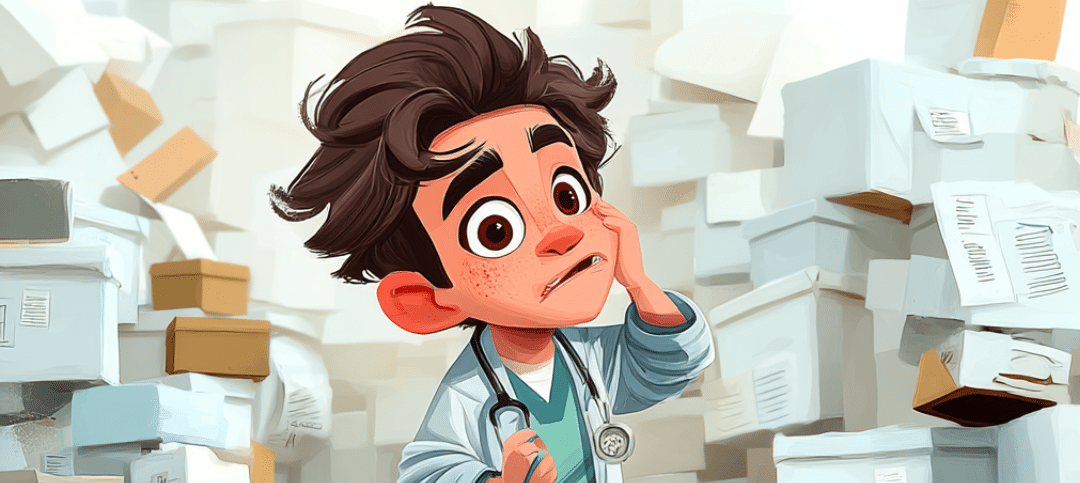Small time-wins RTs can bank starting now.
By Chris Woodland, B.Sc., RRT, CRE — Director of Respiratory, Southmedic Inc.
(Full disclosure—we talk a LOT about our new Oxy2Mask later in this article)
RTs are clocking 10–16k steps in a single shift, and a lot of those steps aren’t always patient care—they’re often wasted loops.
Mask swaps.
Equipment runs.
Running to silence the Sat alarm + reapply oxygen in Mr. Jones’ room because he’s thrown his oxygen mask on the floor in frustration… AGAIN!
Back-tracking after bad handoffs. It adds up fast.
But there are new technologies. Process fixes.
There’s HOPE.
In one audit, the average RT lost 16 hours a year just swapping masks. Another unit clawed back 0.2 FTE a week by tightening up their oxygen device workflow. Scale that across a department and you start to see how small, practical changes turn into measurable relief.
Meanwhile, on the other side, the workforce crunch is real. Leaders see the shortages; frontline RTs feel the burnout. If more staff aren’t walking in the door, the next best thing is protecting your own minutes—because those minutes compound into hours, shifts, and real FTEs.
RTs are being asked to do more with less—that’s not a complaint, it’s the job right now.
Surges don’t schedule themselves.
Gear migrates.
Hand-offs miss details.
That’s why I built this playbook.
After 15 years in the field—and a long dive through r/respiratorytherapy—I mapped the biggest time drains and pulled together fixes you can test without new headcount. Think of it as a way to bank ~1,000 minutes a year, with the math to prove it.
The shortage signals we’re all seeing suggest tomorrow won’t magically look easier. So this article won’t promise miracles. It will promise minutes—the kind you can measure, bank, and defend.
The beginning of this approach is simple: show your math.
- First, baseline your shift: how many mask swaps did you do, how long did each take, how many minutes did you burn looking for equipment, and where did duplicate charting creep in?
- “How many times did you get called to rooms to clear an unnecessary low Sat alarm, just because the patient kept removing their oxygen mask due to feeling hot, sweaty and claustrophobic? And how long did that take to resolve?”
- Next, run one small, safe change for a week—standardize on a single oxygen mask where clinically appropriate, stock it closer to where you actually use it.
- Then, time the same tasks again. Roll those minutes up per RT, per week, and translate them into department hours. That’s a story leaders understand—because it’s yours, from your unit, with your numbers.
You’ll find three things in the playbook below: the time sinks RTs say hit them hardest, the source-backed fixes that trim those sinks without compromising care, and a two-week pilot you can launch without new FTEs.
What RTs call the biggest time drains (from r/respiratorytherapy)
A scan of recent threads surfaces the same themes again and again. None of this is “peer-reviewed”—it’s what your colleagues vent about publicly, and it rings true:
- Understaffed + heavy workload: charge and staff RTs covering multiple ICUs, ER, and transport.
- Workload creep/triage mentality: point system changes stretch days and nights thin.
- Miles on foot: 10k–16k steps in 12 hours; bad knees, sore backs. (Nursing studies show clinicians routinely log miles per shift.) PMC
- Inexperienced backup needing help beyond simple wet nebs.
- PRNs that don’t need to be PRNs (e.g., albuterol “for cough”).
- Mask-off “nuisance alarms” when claustrophobic patients rip off closed masks.
- Poor handoffs/reporting (missing or wrong details; unacknowledged orders).
- Device escalation whiplash (HFNC → BiPAP → “get a vent!”).
- Equipment scavenger hunts: meds in different Omnicells/Pyxis, gear stored inconsistently.
- Doing everything, everywhere—from ABGs to proning to bronchs—often in the same hour.
These are a few places where smarter tools and small workflow tweaks can pay back minutes quickly.
Three near-term ways RTs can get minutes back
1) Fewer mask swaps = less “shoe-leather” time
On busy floors, RTs report 3–4 oxygen mask changes per 12-hour shift (some shifts more, some less). If each change—walk to storage, grab the right size/device, re-educate the patient, clean up—takes ~7–10 minutes, that’s ~21–40 minutes on a heavy shift. Your mileage will vary; the only number that matters is your own unit audit.
Why standardize on a single mask when possible?
- One mask that reliably covers ~24–90% FiO₂ reduces device changes as patient needs fluctuate.
- If the same mask also samples EtCO₂ (no separate nasal cannula), you avoid extra device swaps when monitoring ventilation is indicated.
What the Hoerr paper shows: In a departmental review, Cheryl Hoerr, MBA, RRT, FAARC, found ~20 minutes per week saved for each RT, which scaled to ~0.2 FTE (or more) at the department level—without compromising care.
Use her math as a ceiling; measure your own baseline and report your actuals.
How to try it this month
- Pick a high-use O₂ area (e.g., step-down/respiratory ward).
- Track one week of mask-swap time (start/stop on a pocket card or phone note).
- Switch to a single-mask protocol where clinically appropriate and repeat the timing the next week.
- Roll up the minutes saved per RT; translate to department-level hours and a fractional FTE using Hoerr’s worksheet.
Curious how the open-oxygen Oxy₂Mask approach works? Details and the Hoerr article are posted at thebetteroxygenmask.com/.
2) Cut equipment hunting and back-tracking
Clinicians routinely lose time searching for gear. Studies of bedside staff (mostly nursing) report ~21 to 60 minutes per shift spent locating equipment; RTLS (real-time location systems) and smarter stocking reduce that waste. 24x7mag.com
Two quick wins
- Stock closer to use: Distribute commonly used O₂ interfaces (fewer SKUs if you standardize) in high-use care areas, not just central supply. That reduces steps between storage and bedside—especially helpful on long pods. (Leaders widely plan RTLS/RFID to modernize inventory visibility.) RFID JOURNAL
- Know before you go: If your hospital has asset-location tools, make sure RTs have access on their phones/workstations. Even simple location tags on vents/BiPAPs slash search time. HIMSS
3) Let data populate itself (when it can)
Device-to-EHR integration (monitors, vents) can pre-populate flowsheets and reduce duplicate keystrokes. That doesn’t remove clinical checks, but it shortens the documentation part of the job and reduces lag time/errors from manual transcription.
Reality check: You’ll still round, assess, and verify settings—this just takes the copy-and-paste work off your plate.
Getting started: a small, credible pilot you can run in 2 weeks
- Baseline audit (7 days):
- Time a representative sample of mask swaps and equipment hunts on your unit.
- Capture counts, minutes, and reasons (e.g., “changed to different O₂ device for FiO₂ step-up,” “patient pulled mask,” “couldn’t find right size”).
- Intervention (7 days):
- Use a single-mask protocol where clinically appropriate (targeting ~24–90% FiO₂ range; include EtCO₂ sampling when indicated).
- Pre-stage masks in the high-use area and make sure staff know where to find them.
- If available, turn on asset-location features for vents/BiPAPs in that area. HIMSS
- Show your math (and be conservative):
- Convert minutes saved per RT to weekly department hours and a fractional FTE (Hoerr shows ~20 min/week/RT ≈ 0.2 FTE at scale; use your own numbers).
- Frame the win as more efficient use of clinician time that lets RTs focus on your sickest patients, and yes—helps curb overtime. (Admin leaders recognize that inventory & device visibility are tied to clinician efficiency.) RFID JOURNAL
Guardrails: keep it clinically honest
- Don’t overstate “automation.” Device integration reduces duplicate entry; it doesn’t replace bedside assessments.
- Don’t over-promise time saved. Use your measurements; cite the Hoerr benchmark as a reference point, not a guarantee.
- Use the right tool for the patient. Single-mask strategies reduce swaps when clinically appropriate; they don’t override clinical judgment.
Closing
Your expertise is ventilation management and highly specialized respiratory care—not logging extra miles, juggling SKUs, or re-documenting the same numbers. If a smarter oxygen mask and a few layout tweaks can give you meaningful minutes back every shift, it’s worth a try.
Resources & links
- Cheryl Hoerr, Leveraging Technology to Maximize Efficiencies in Today’s Challenging Respiratory Care Environment. (Download + ROI worksheet.)
- OxyMask technical overview (FiO₂ 24–90%, open architecture).
- OxyMask EtCO₂ sampling overview (integrated capnography line).
- AARC survey on RT shortages.
- Equipment-search time and RTLS references. 24x7mag.com
Learn more or grab the Hoerr article here.

